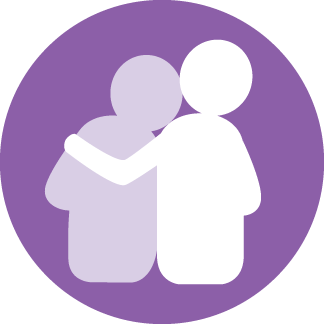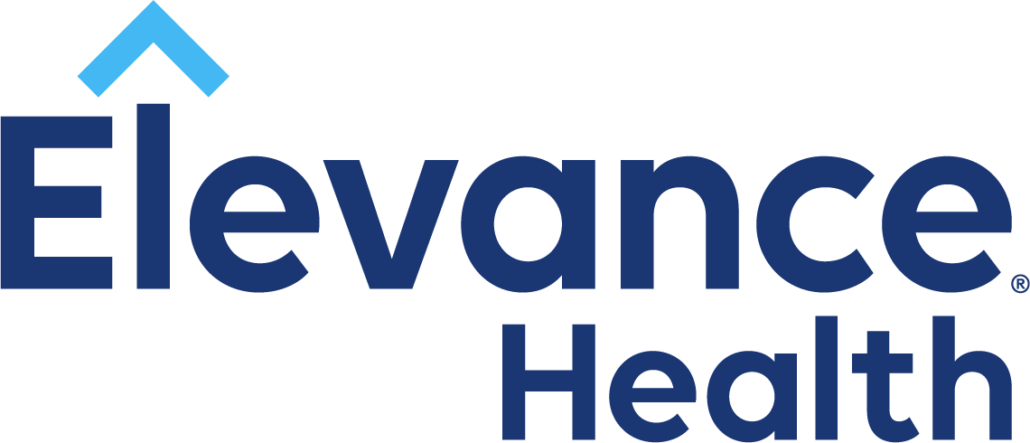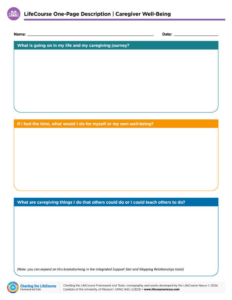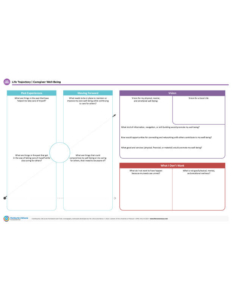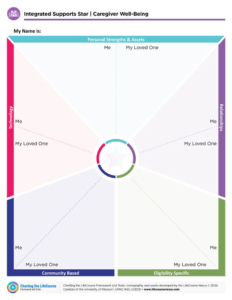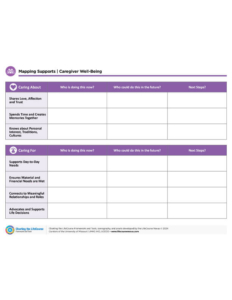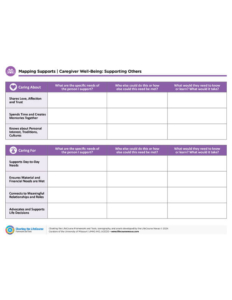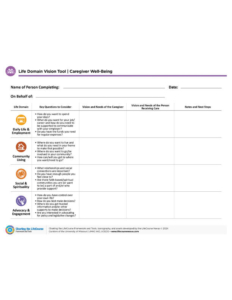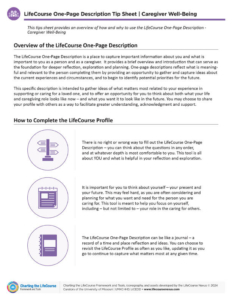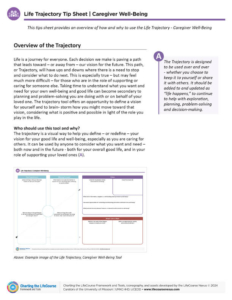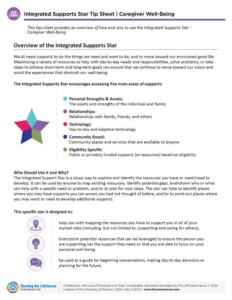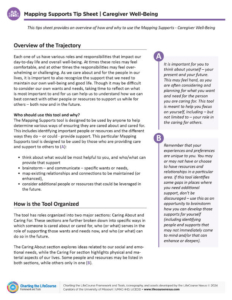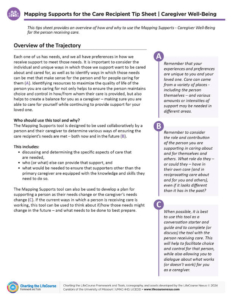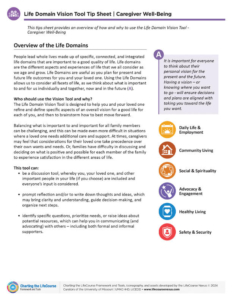The information and tools provided here are designed to help you in determining how to address those experiences – and others that may be unique to you and your caregiving journey. They facilitate a focus on your own well-being and needs, while continuing to recognize the interconnection and impact of the role you play (and responsibilities you have) in the lives of others. The tools provide guidance and prompting to help you reflect on what is most important to and for you, so that you can:
- Gather and organize ideas about your current experiences and circumstances, and your priorities for the future
- Consider how to maintain your own physical, emotional, and mental well-being
- Make decisions and plan for next steps
- Clearly articulate what you want and need so that you can share and communicate with others
- Connect with other people and resources to support you while you support your loved one


